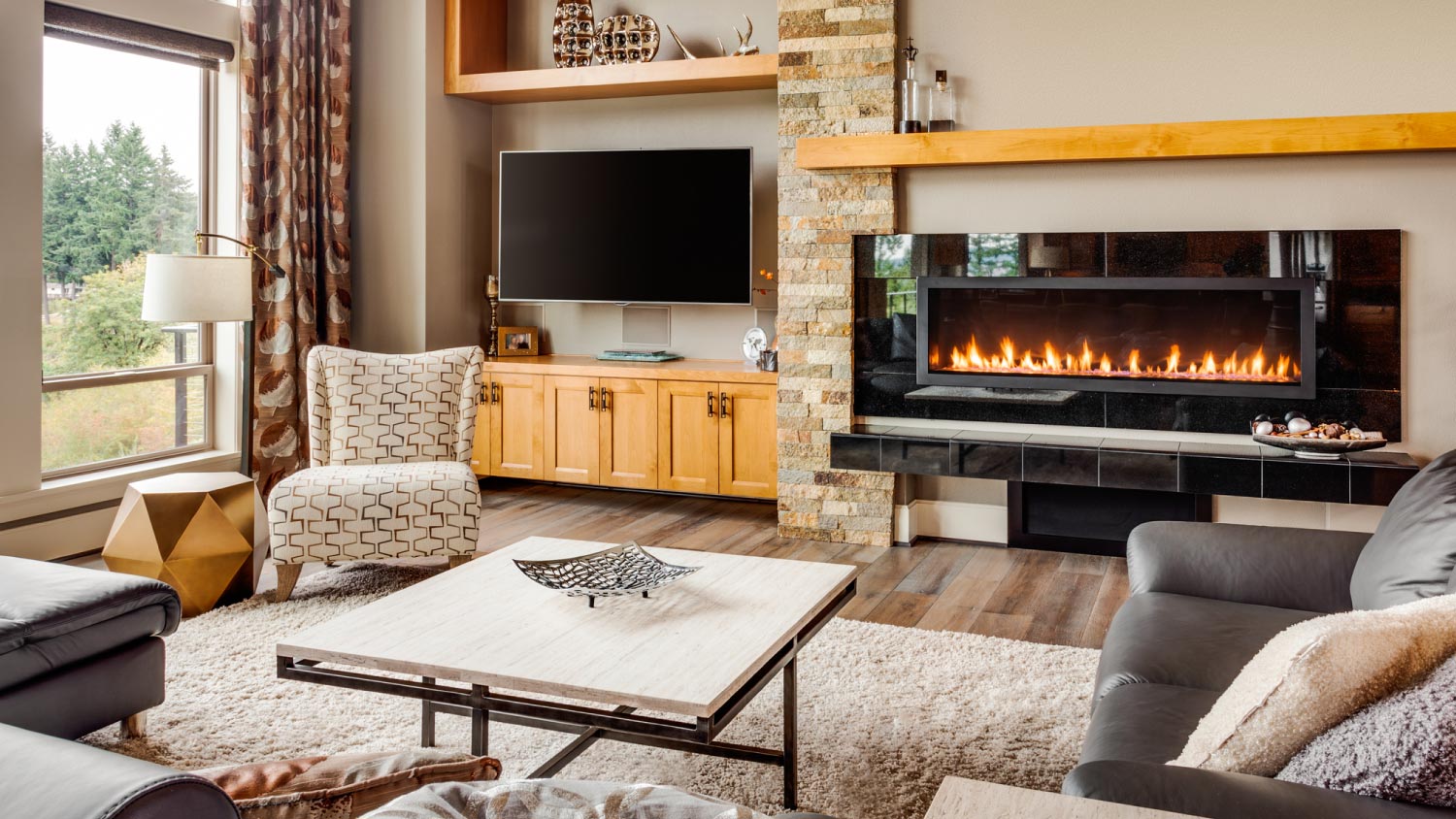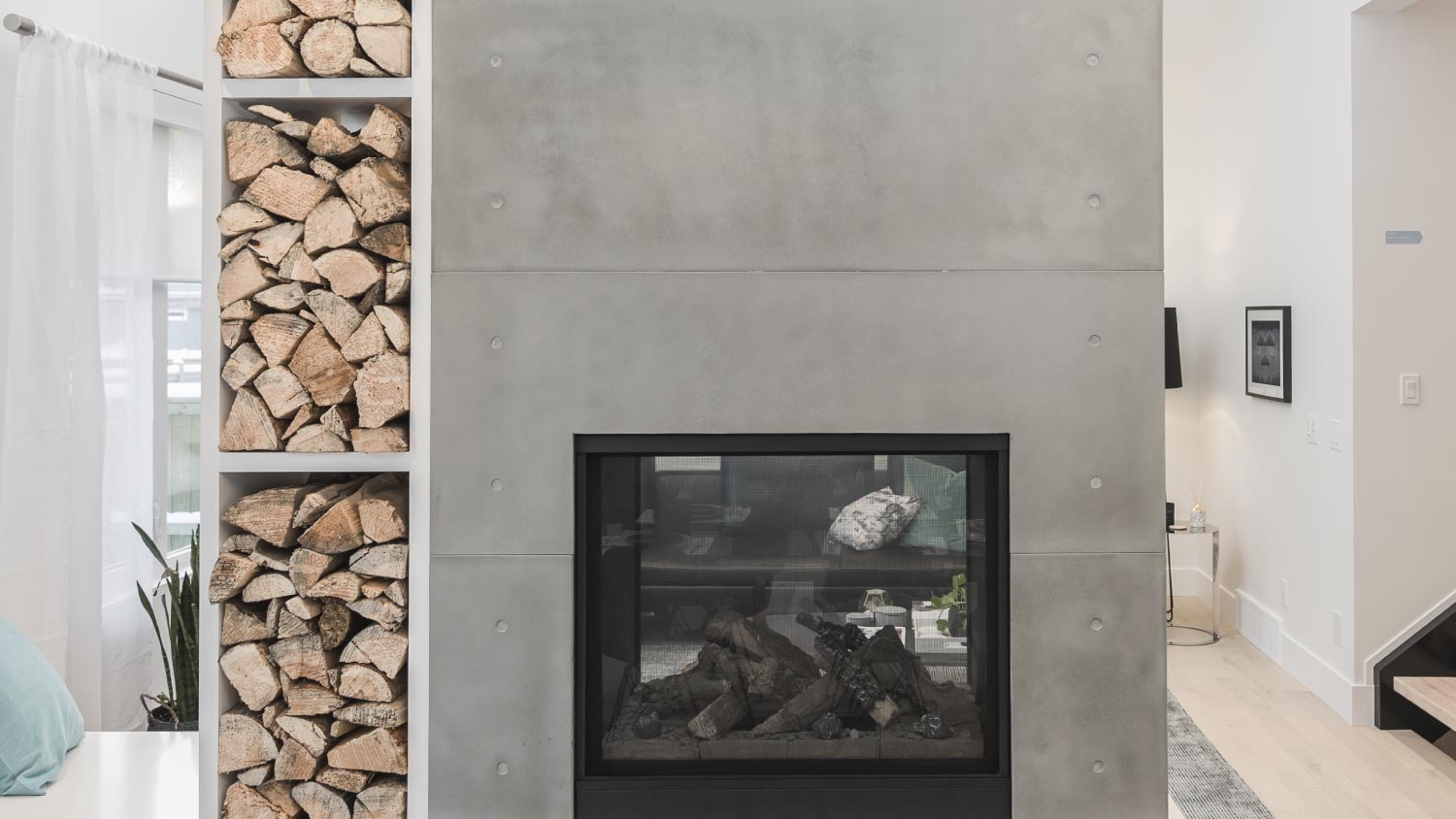
The cost of removing a fireplace insert depends on the type of insert that’s installed. Read on to learn why electric is cheaper than a gas or wood insert.
Set your fireplace ablaze (efficiently, of course)


Gas fireplace inserts are efficient and provide around 25,000 to 40,000 BTUs.
Wood fireplace inserts offer over 65,000 BTUs of heating power.
Electric inserts are easy to install but provide lower heat output, around 5,000 BTUs.
For non-electric inserts, choose one that leaves one to two inches between the insert and the fireplace opening.
Fireplace insert costs range from around $500 for electric to $3,000 for pellet.
Who doesn’t love sitting by the fireplace, enjoying the warmth it provides and listening to its soothing wood-crackling sound? While traditional fireplaces are the gold standard for comfort in colder months, homeowners may want a little more from their fireplace—like heating efficiency. Where traditional fireplaces fall short, fireplace inserts pick up the slack without sacrificing aesthetics. Learn more about the different types of fireplace inserts and how to choose which one is best for your home.
A fireplace insert is an enclosed, fireproof combustion box that helps trap heat, contain the fire, and make your fireplace more efficient for your home. Most fireplace inserts are constructed of steel or cast iron to withstand high temperatures, and they have self-cleaning insulated glass on the front. Both these components allow your fireplace to trap heat efficiently, and some units have blowers that distribute the hot air throughout your room.
The fuel that powers your fireplace insert plays the most significant role when choosing the right one for your home. Let’s look at the different options a little more below.

A gas fireplace insert requires access to a gas line to operate it and uses propane, natural gas, or both as a fuel source. These inserts provide high levels of heat output, approximately between 25,000 to 40,000 BTU, making it an efficient zone heating option. They provide clean, natural heat and can use faux logs made from ceramic or ceramic fiber to resemble a traditional fireplace or glass beads for a more modern touch.
Gas inserts are also low maintenance, don’t need refueling, and are electronically operated. Plus, you can convert your wood fireplace to gas as long as you have a gas line. Neat, right? However, you will need carbon monoxide detectors to identify any leaks.

A wood fireplace insert is the go-to option if you love the wood-crackling sound of traditional fireplaces. It also provides a more efficient heating option, pushing out at least 65,000 BTU an hour. While they are beautiful and provide comfort when in use, they’re high-maintenance, require fresh firewood, and release creosote that sticks to your chimney walls and flows outdoors, which can contribute to air pollution. However, your wood-burning insert can burn cleanly using EPA and 20/20-certified wood inserts.

Electric fireplace inserts are one of the simplest and most aesthetically pleasing options available. These units let you turn on the insert with a remote control, so you can get a little heat pumping through your space without ever leaving the couch. Because they don’t require a vent—just an electrical outlet—you can install one wherever you have an electrical source and space.
But one thing to keep in mind with these inserts is that they aren’t as warm as other options. On average, these units produce 5,000 BTU, which can take the edge out of the air on cool days, but we don’t recommend these for zone heating in frigid temperatures. They’re also not the most realistic-looking units available.

Pellet-burning fireplace inserts use compressed organic material such as bark, sawdust, and wood chips to light up the fireplace instead of logs. It’s a renewable, carbon-neutral fuel source that can be operated using electronic controls, needs weekly maintenance when in constant use, and has efficient heating capabilities. Compared to wood-burning inserts, pellets produce less soot, making them a cleaner burn for your home. One of the pros of this fuel type is that you set the temperature range and heat output you want, and it automatically dispenses the pellets from the hopper for you.
Most homeowners hire a pro to update or alter an existing fireplace, such as refacing or adding a hearth. On the other hand, some homeowners decide to replace an existing fireplace, whether to save space, improve safety or energy efficiency, or upgrade to a modern fireplace insert.
Now that you’ve learned more about the different types of fireplace inserts, you’ve probably warmed up to the idea of adding one to your home. But how do you decide which one is best for your home? Follow these steps to buy the right fireplace insert.
If you don’t want to fuss with buying pellets or storing wood and you don’t mind a lower heat output, an electric fireplace insert may be right for you. If you’re looking for more warmth, consider a wood-burning or pellet fireplace insert, but gas will be just as good without the need for wood or pellets.
Once you have the ideal fireplace insert in mind, you’ll need to know what size to purchase.
Measure the width and height of the front opening.
Measure the width of the back.
Measure the depth from the front opening to the back.
Measure the length from the top of the fireplace opening to the mantel.
If you’re not sure what size fireplace insert is best for you or if you took the correct measurements, contact a fireplace installation pro near you for help.
Next, you have to consider the fireplace insert’s venting needs. If you’re looking for an insert that doesn’t need outdoor venting, an electric or vent-free option would be best.
Vent-free inserts are gas-burning units that pull air from the surrounding room for combustion. Instead of releasing those gases back outdoors via a chimney, flue, or pipe, they safely burn off byproducts and release them indoors. These vent types also use an oxygen depletion sensor that helps increase their efficiency. If you’re interested in a vent-free option, check with your local building codes to see if it’s restricted in your state or city.
Other gas-burning vent types are direct and B-vent. A direct vent pulls air from the outdoors to feed the fire and releases all combustion exhaust and byproducts back outdoors. A B-vent, on the other hand, draws air from your home and releases it outdoors. A wood-burning fuel type will require outdoor ventilation.
Your budget will play a major role in the fireplace insert that’s best for you and your home. Here’s a price overview of the cost of fireplace inserts:
Gas: $700–$1,000
Electric: $500–$2,000
Wood: $1,000–$1,500
Pellet: $2,000–$3,000
Depending on the fuel type, the maintenance level you want to commit to is also something to keep in mind. If you’re interested in a wood fireplace insert, you’re looking at more maintenance needs. But if you prefer to forgo most maintenance needs, most homeowners consider electric inserts a must-have. Regardless of the fuel type you choose, the National Fire Protection Agency (NFPA) recommends that you clean and sweep your chimney once a year for continued safe operation.
When buying a fireplace insert, make sure to buy a surround, which slots into the gaps left around it. You may not need a surround for electric inserts because they are self-contained.
You should also consider other features, such as blower fans that help move warm air around, mesh or metal screens, emergency shut-off sensors, a new mantel, decorative logs, and more.
Go to a local fireplace company, hardware shop, or an online retailer to find a fireplace insert that meets your criteria. It should match the type of fuel source you prefer, and the measurements should fit within your existing fireplace opening, with maybe one or two inches of clearance that can be filled with a surround.
From average costs to expert advice, get all the answers you need to get your job done.

The cost of removing a fireplace insert depends on the type of insert that’s installed. Read on to learn why electric is cheaper than a gas or wood insert.

With a gas fireplace, it’s important to stay up-to-date on your inspections. Learn more about how much gas fireplace inspections cost before you book one.

A fireplace remodel cost depends on the extent of the remodel and the materials you choose. Use this guide to calculate your costs and budget accordingly.

Wondering if ventless fireplaces are safe? As long as you follow the proper installation techniques and have safeguards in place, you can use them without worry.

Looking for fireplace hearth ideas that’ll upgrade your home? Advanced DIYers can cover a brick fireplace with concrete for a cozy and chic look.

Understanding what a fireplace hearth is can help you determine what type you want in your home or how to remodel an existing fixture for optimal results.